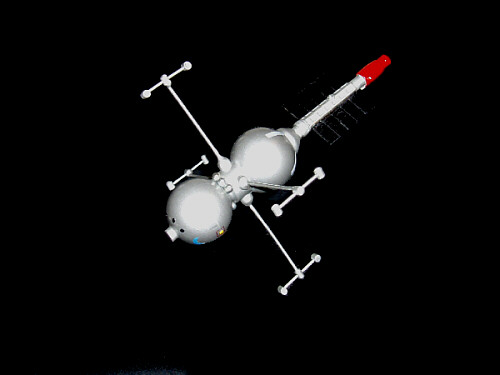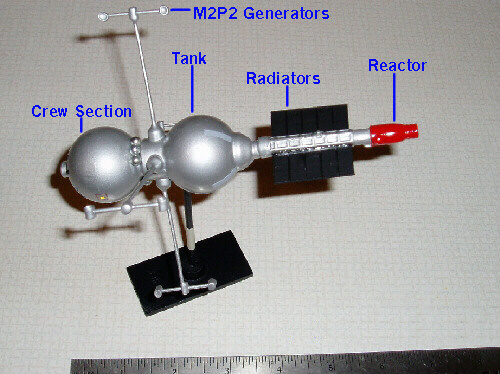Nuclear-powered Plasma Sail
The Best of Both Worlds

Elsewhere on my website, I described a solar-powered plasma sail which uses the sun's energy to power the M2P2 generators. (In case you skipped that page, plasma sails use the solar wind to push a small imitation of the Earth's magnetosphere to accelerate the spacecraft to very-high velocities. As an added bonus, just as Earth's magnetic field shields our planet from dangerous solar eruptions and radiation storms, a magnetic plasma sail protects the occupants of a spacecraft from radiation.) Such a spacecraft drive would be simple to construct and inexpensive to operate compared to other drives, yet have a very high Isp (36,000 sec) comparable to a high-performance fusion-pulse drive. However, photovoltaic solar cell arrays become ineffective for generating electricity beyond the orbit of Mars so an alternate source of power is needed. One solution is to use a nuclear reactor to provide electricity. The plasma sail spacecraft would not need a big fusion reactor - a small fission reactor using radioactives mined in the Asteroid Belt and coupled with a compact Brighton-cycle or similar closed-system turbine could supply plenty of electricity.

The model of the USV Blue Moon pictured above is my concept of a nuclear-powered plasma sail deep-space vessel. I envision this as having been assembled in space using spherical hull sections formed from vacuum-deposition of aluminum vapor over balloons, and a reactor/boom assembly possibly salvaged from another spacecraft. The crew's quarters, air lock, and some internal cargo space are located in the forward sphere, while the aft sphere contains a large tank to supply gas to the M2P2 generators. Pairs of M2P2 generators are mounted on the four slender booms projecting out from the central "handle" section of the dumbbell-shaped hull. With her low-thrust plasma sail drive the USV Blue Moon is no "hot-rod", but she can steadily accelerate to terrific velocities over time and economically cruise the solar system.